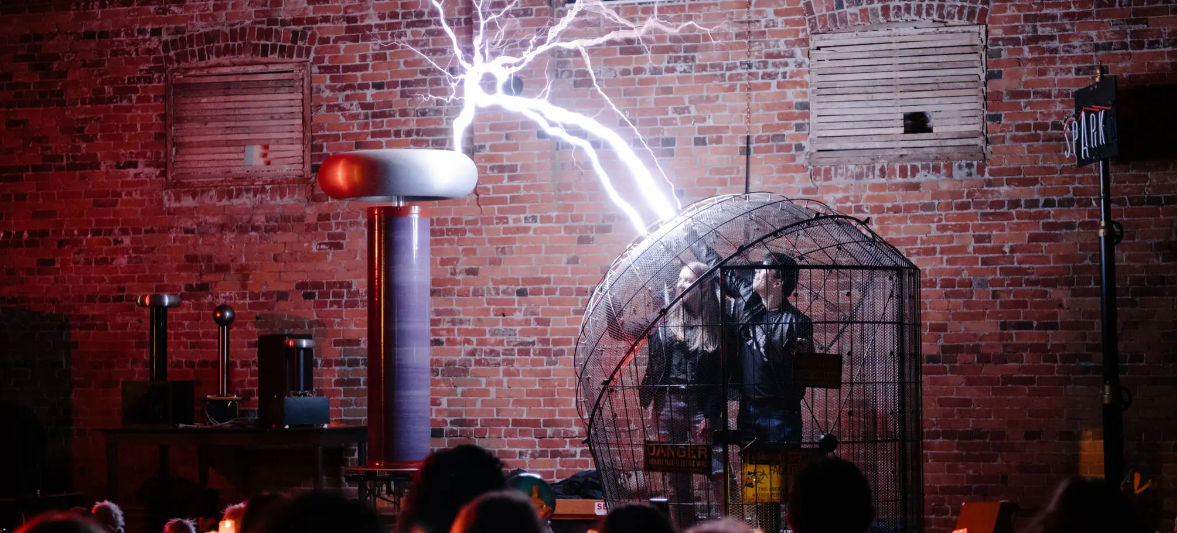From the very beginning, the Museum’s founders wanted to create a major attraction, something that would draw people from all over the world.
“We always dreamed of having a signature demonstration, something people couldn’t experience anywhere else,” says John Jenkins, president, CEO & co-founder. “Something grand and dramatic, like the Eiffel Tower, or Old Faithful—just indoors.”
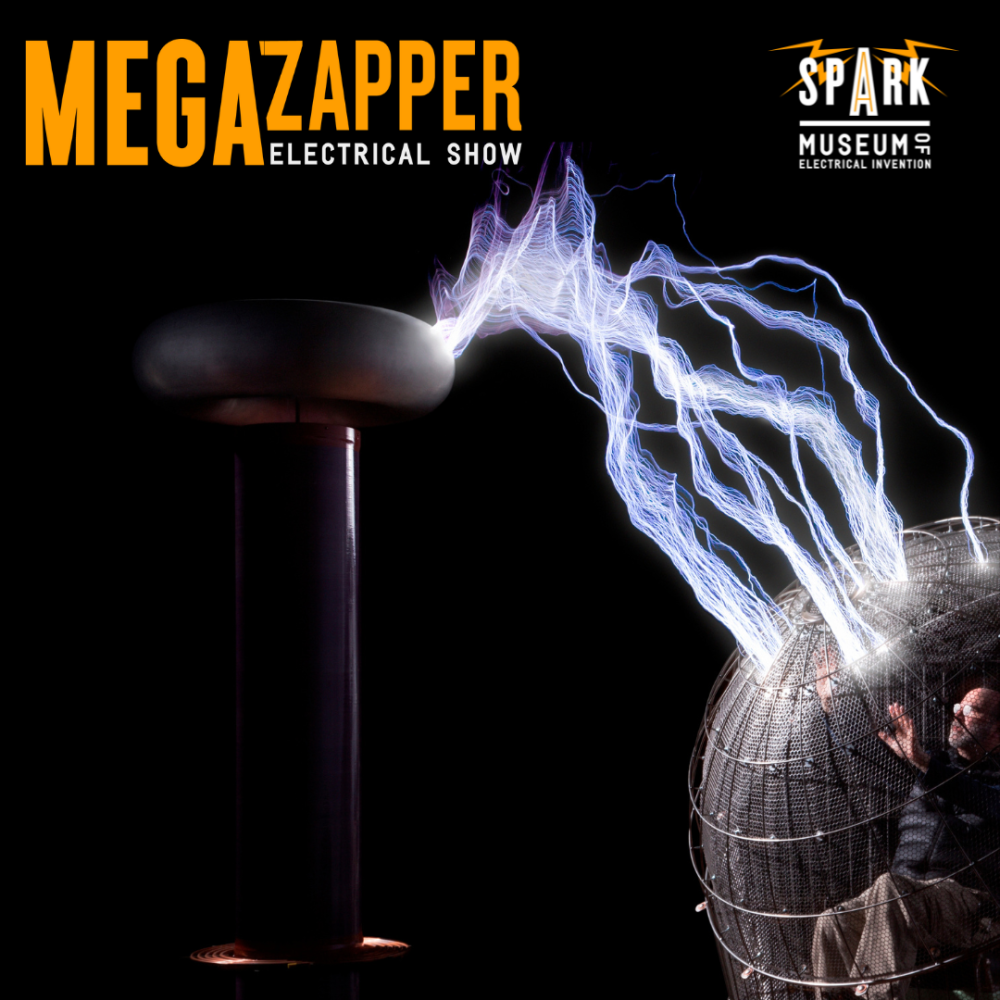
On September 13, 2012, that dream came true with the unveiling of The MegaZapper, one of the largest lightning machines in the country. “Bellingham’s answer to The Space Needle,” says Jenkins. “Only louder.”
The MegaZapper is a ten ft. tall Tesla coil, and the star attraction of the wildly popular MegaZapper Electrical Show. These family friendly performances continue to attract thousands of visitors annually, and consistently rank as Whatcom County’s top indoor tourist attraction.
Seeing The MegaZapper crank-out 12 ft. bolts of lightning—indoors—is a spectacular experience, to be sure. Yet, it is only half of the attraction, and only part of what people want to see.
“Visitors want to see a machine that makes huge lightning, true,” says Abby Whatley, director of programs. “But what they really want is to see someone—perhaps themselves—interact with that big bolt of lightning, and live to tell the tale!”
“Seeing The MegaZapper without The Cage of Doom is a lot like a peanut butter sandwich without the jelly,” observes Bryan. “Something’s missing.”
At the end of every MegaZapper Show, visitors have the unique opportunity to get into The Cage of Doom—an oversized birdcage—and get swarmed with all the lightning they can handle, which is what they are expected to do. “People are encouraged to actually touch the inside of the Cage,” says Bryan. “Even though the metal is attracting the lightning, and the Cage is full of holes, it’s completely safe to touch.”
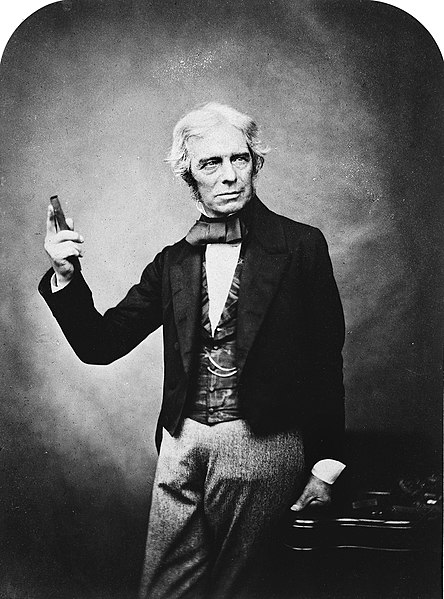
Say’s who? It certainly doesn’t look safe. And why does the SPARK Museum insist on performing this death-defying act every chance they get?
As with most great discoveries in early electrical history, we start with Benjamin Franklin.
Although the effect is named after English physicist Michael Faraday, it was that rascally colonial, Ben Franklin (1706-1790), who first observed and documented the effect in his milestone treatise, ‘Experiments and Observations in Electricity’, 1751.
Franklin noted that a silver vessel would attract an electric charge, yet act as a shield and repel the same charge from the interior of the container, even when making contact with the inner surface. Franklin’s experiment showed that the inside of a metal container was completely protected from the electrical charge, but didn’t know why.
“You require the reason; I do not know it. Perhaps you may discover it, and then you will be so good as to communicate it to me.” – From Benjamin Franklin to John Lining, 18 March 1755
It was Michael Faraday (1791-1867), who took Franklin’s experiment a step further and constructed a room lined with metal foil. The space was large enough to install a work bench and perform experiments while sealed inside the cage. Then his lab assistant would apply electric charge to the exterior of the cage, using an electrostatic generator.
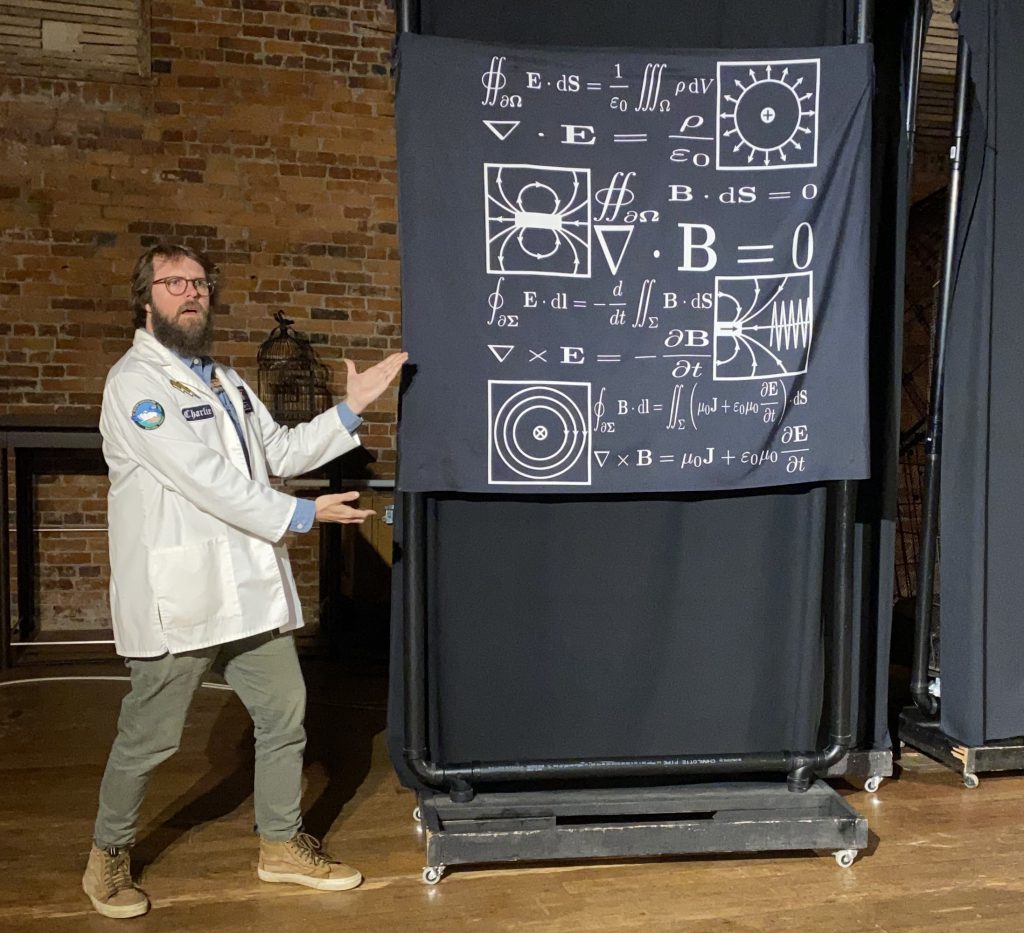
What happened? Amazingly, nothing. The conductive material acted like a shield, stopping the electrical charge from penetrating the room, and having zero effect on everything—including Faraday—inside.
But if the metal cage is attracting the charge, and the cage is full of holes, why would Faraday have the ability to touch the other side of the cage and not get shocked? It makes no sense.
“It may defy logic,” says Jenkins. “But it doesn’t defy the math.”
To took mathematician Carl Fredrich Gauss (1777-1855), to ultimately find a solution. Introduced in 1835, Gauss’s law is a fundamental law of electromagnetism, and mathematically defines how magnetic and electric fields are intertwined—opening up the electromagnetic spectrum, and unlocking many of electricity’s deepest secrets.
It’s been said that math is the language of the natural world,” says Jenkins. “The Faraday cage effect is a fascinating example.”
“Gauss’s law states that the metal shell redistributes electric charges around the exterior of the cage,” says Jenkins. “Creating an electric field that cancels-out incoming external electric fields within the enclosed space. As a result, the net charge enclosed within the cage (and thus the electric field) becomes zero, effectively shielding the interior from external electric fields.”
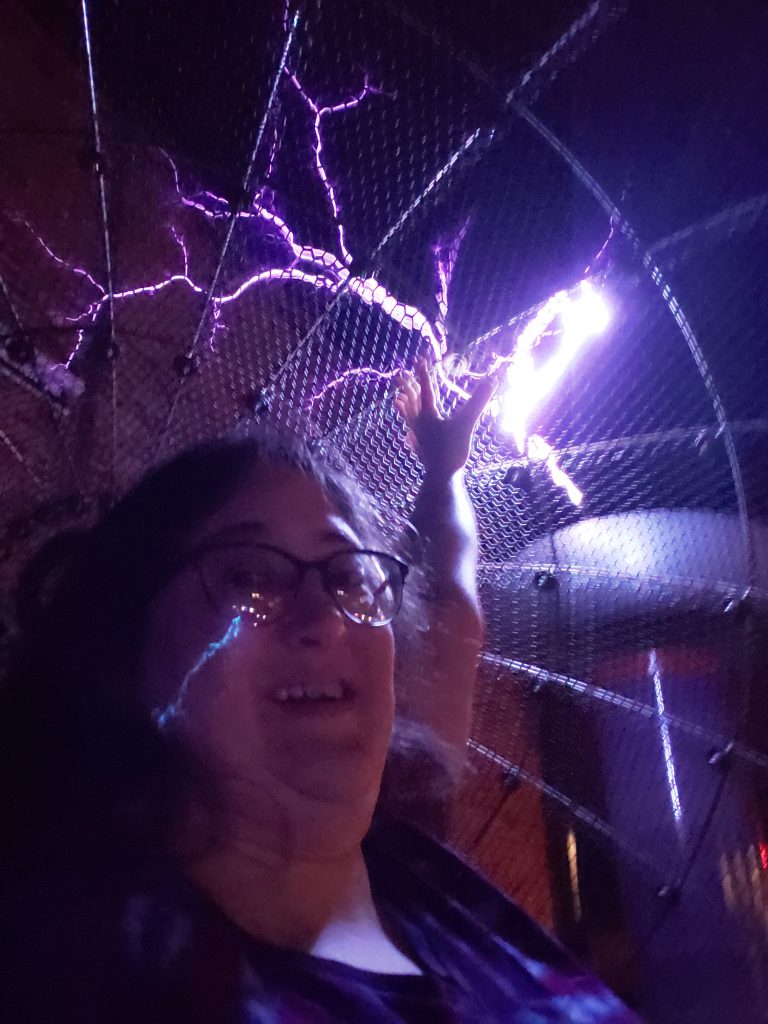
What does this mean to you personally? It means if you are in a car (not a convertible!), or an aluminum outhouse, or a great big metal birdcage—and you get hit with a bolt of lightning, you are located in the one place the electricity is not. Guaranteed.
Airplanes interact with lightning all the time. Common sense would suggest a strike of lightning would cook you and everyone in the airplane, like pigs in a blanket—but no, you are flying in a huge Faraday cage. The lightning passes harmlessly over the conductive surface of the plane, without harming the equipment or passengers inside.
Attention all science nerds and/or thrill seekers!
Here is your chance to put your money where our science is!
Every Saturday & Sunday at 2:30pm adult visitors have the opportunity to put Gauss’s law to the test, and recreate Michael Faraday’s death-defying human electroscope experiment. “Let’s see if you light up,” laughs Jon Winter, Museum co-founder. “You can tell us if any of that lightning gets inside the Cage of Doom.”
“This is scientific method in action,” laughs Bryan. “Once you come face to face with a bolt of lightning, it’s hard to forget.”
“It’s what we’re all about,” says Whatley. “Taking something we think we know, testing it, and discovering something completely different. Bingo, we’re thinking like a scientist!”
Stay grounded.
